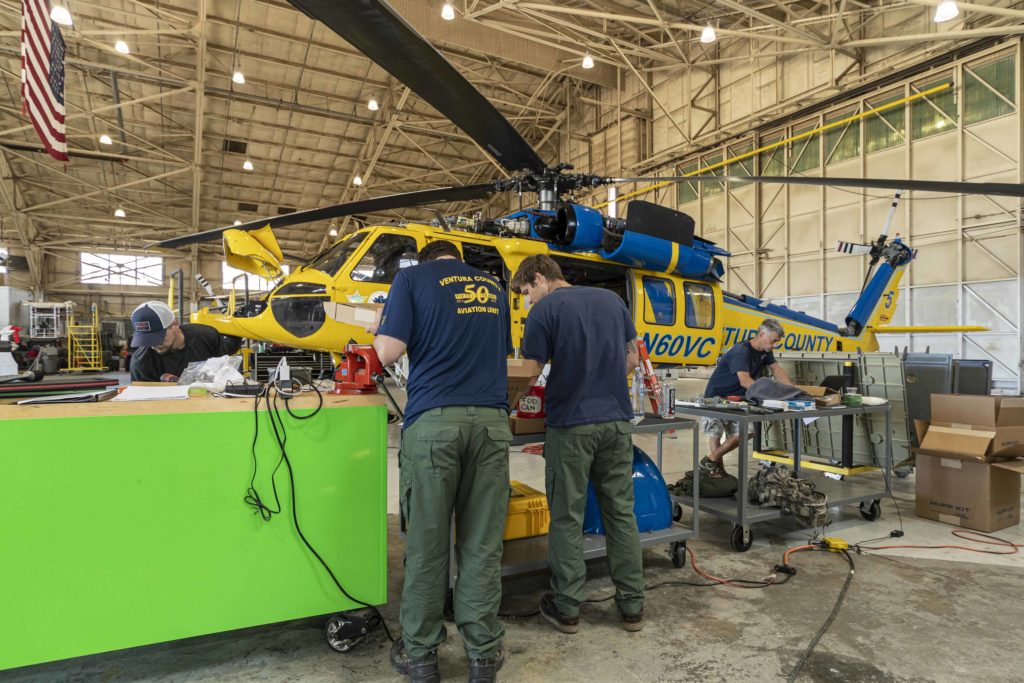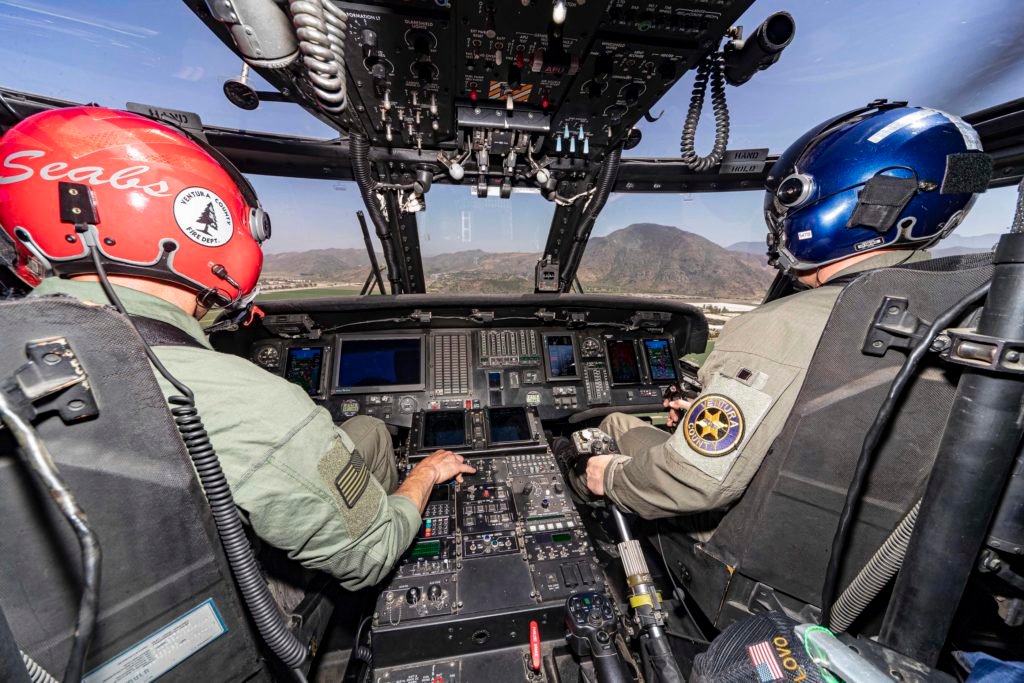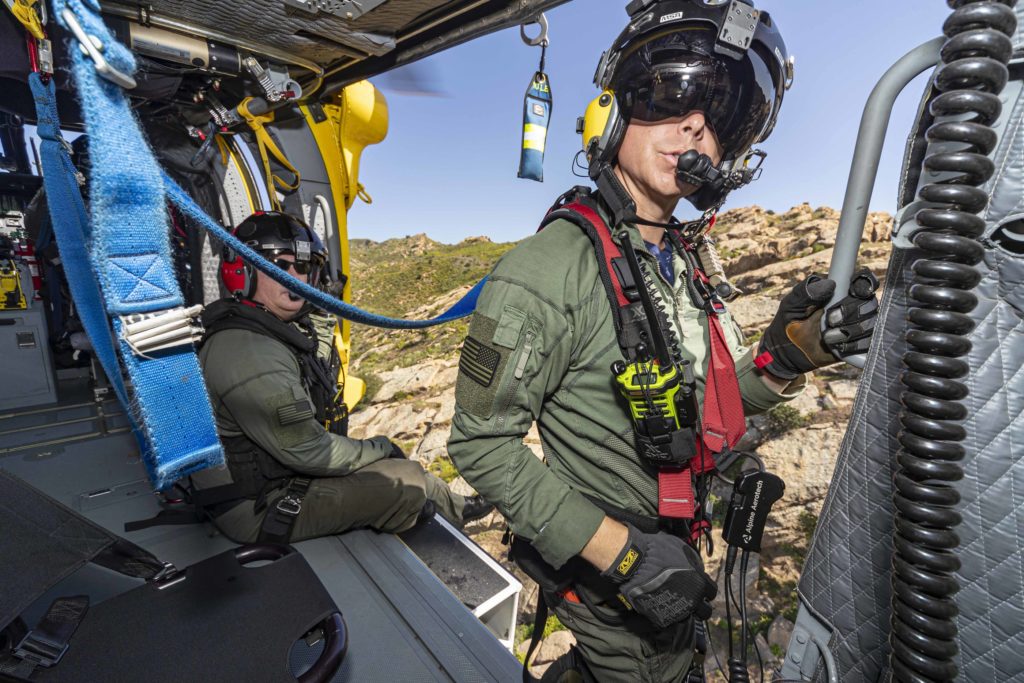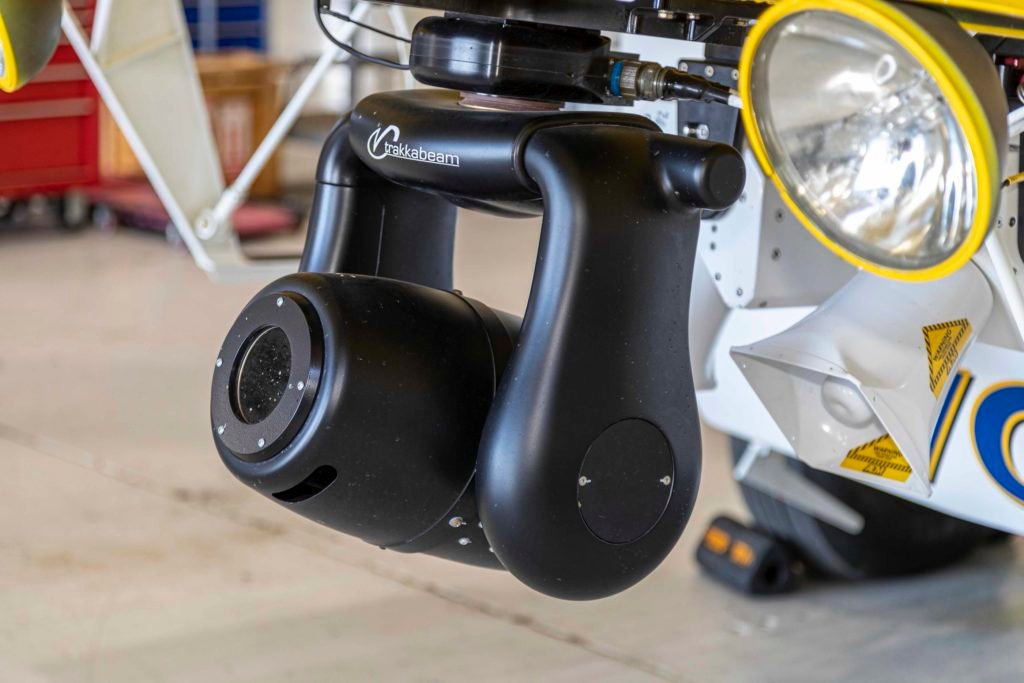Founded just over 50 years ago in 1971, the Ventura County Aviation Unit is the only public safety aviation organization in Ventura County. It’s also one of the few in the United States to combine law enforcement and fire firefighting in a single team.
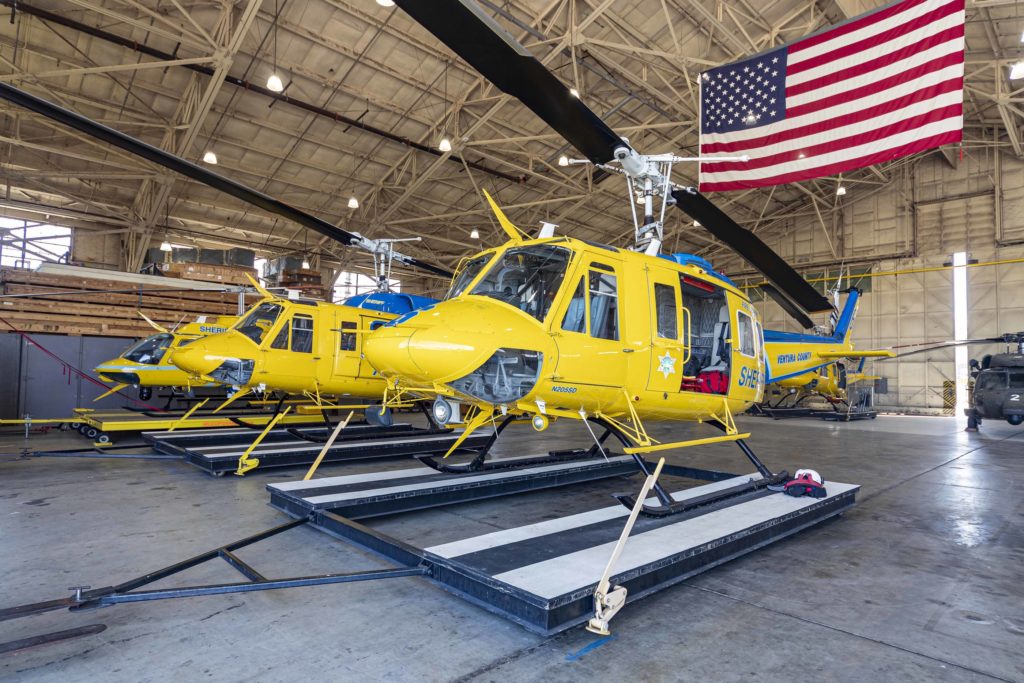
The unit has six helicopters: a Bell 205B, a Bell UH-1H, a Bell 206L3, and three HH-60L’s, two of which were former Black Hawk helicopters used by the Army National Guard and converted by United Rotorcraft to the Firehawk configuration. It’s also recently received approval to acquire a Subaru Bell 412EPX helicopter to replace the UH-1H. (It will be the first 412EPX in North America configured for public safety and used primarily for search-and-rescue missions, emergency medical services, and general law enforcement operations.)
Operating from Camarillo Airport in Southern California, the unit flies over 1,000 hours per year on missions varying between law enforcement, search and rescue, emergency medical services, and fire suppression, covering an area of 2,208 square miles, of which 1,843 is over land and 365 is over water. Some of that is rugged terrain, unreachable by other means, so those helicopters are often the only asset able to provide critical first response.
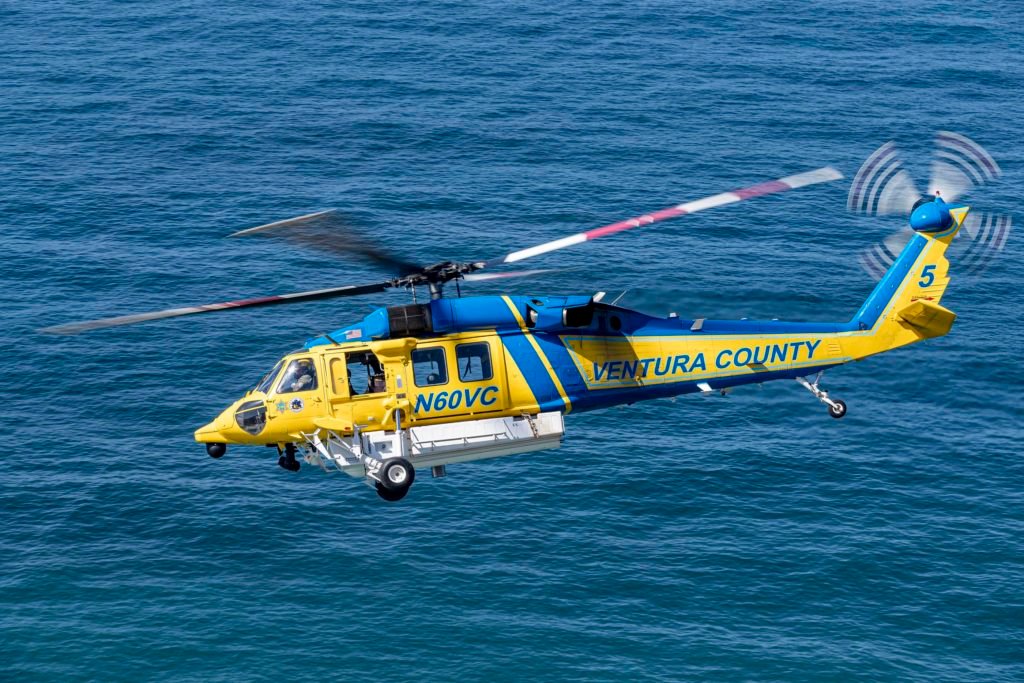
But the Aviation Unit operates under a unique arrangement. The aircraft are owned by the Ventura County Sheriff’s Department but operated jointly with the Fire Department. The sheriff and the fire chief have an agreement where the Fire Department will contribute funds to support unit funding and personnel.
The current captain of the Aviation Unit is Captain Randy Downard of the Sheriff’s Department. Sergeant Kelly Roark, also of the Sheriff’s Department, and Captain Mel Lovo, of the Fire Department, are the day-to-day functional managers and coordinate daily operations. Chief Nick Cleary, a Fire Department battalion chief and a former member of the aviation unit, supports fire operations on a regular basis.
The unit is staffed daily for one full air squad, which includes aircrew for two helicopters: a pilot and two crew chiefs (one is typically a fire crew chief, the other is a sheriff crew chief). Often the helicopters fly with a volunteer search and rescue medic, part of the county’s all-volunteer search and rescue team.
The Black Hawk Decision
The HH-60L Black Hawk helicopters were purchased through the U.S. government’s Black Hawk Exchange and Sales Team (BEST) program, the first two in 2017 and the third about a year later. A lot has gone into preparing for their entry into service.
Buying the third HH-60 was a smart decision, said Alex Keller, a veteran pilot with the aviation unit. Called Copter 2, it was in fact the first to arrive and gave the unit a platform to train on while the other two were being converted by United Rotocraft to the Firehawk configuration, a process that was delayed for various reasons and took over two years to complete.
“That first Black Hawk ended up being an outstanding training platform,” he said. “[We] were able to train a ton on [it]. Our training program consisted of all four pilots going to Flight Safety International in Florida for an initial training course. We also hired KLB Aviation – Kevin Bredenbeck, former Chief Pilot, Director of Test, and Director of Flight Operations at Sikorsky – to do some physical flying with us. He did all the flight tests for United Rotorcraft for their Firehawk program as well, so he has a ton of Black Hawk/Firehawk experience.”
At the time, the unit did not have any pilots with HH-60L experience, “so we had to start from nothing,” said Keller. But they were able to draw on the knowledge of Los Angeles County Fire, which has been flying Firehawks for about 20 years, and participated in several fly-alongs and observed everything from their staffing to maintenance procedures. “Basically, we were able to get a best practices overview. We took all that information and turned it into something that we could work with and what we thought was best for our unit.”
While they waited for the two Firehawks, Ventura County opted to put Copter 2 to work as well. Some unit members had experience with a Bambi Bucket, so they bought one for the Black Hawk to close the capability gap somewhat with the Firehawk and prepared for Southern California’s fire season.
“That aircraft did a lot of work,” said Keller. “I think in the first two years, we flew almost 350 hours on Copter 2. Being able to do lot of flying was not only great for the fire crews at the unit, but also for those spread throughout the county to get somewhat familiar with working around the Black Hawk airframe.”
Today, even with the arrival of the two Firehawks, Copter 2 remains a working aircraft and available for unit operations.
The Firehawk Effect
The two Firehawks, painted in Ventura County’s familiar yellow and blue and referred to as Copters 4 and 5, arrived in 2021 from United Rotorcraft after an extensive conversion program that included a 1,000-gallon Kawak water tank attached to the belly of the aircraft that required extended landing gear to accommodate the tank.
Designed specifically for the Firehawk, the modular hydraulic tank has a retractable snorkel that can refill the aircraft in less than one minute. An Airborne Liquid Dispensary System allows crews to select different drop coverage levels and the computer-controlled doors underneath the tank will open and close according to the type of coverage selected. Crews can execute pinpoint drops or even split drops onto multiple areas. Due to California’s extreme fire activity, almost 80 percent are single drops selected for maximum coverage, crews explained, because they are trying to put as much water on the fire as quickly as possible.
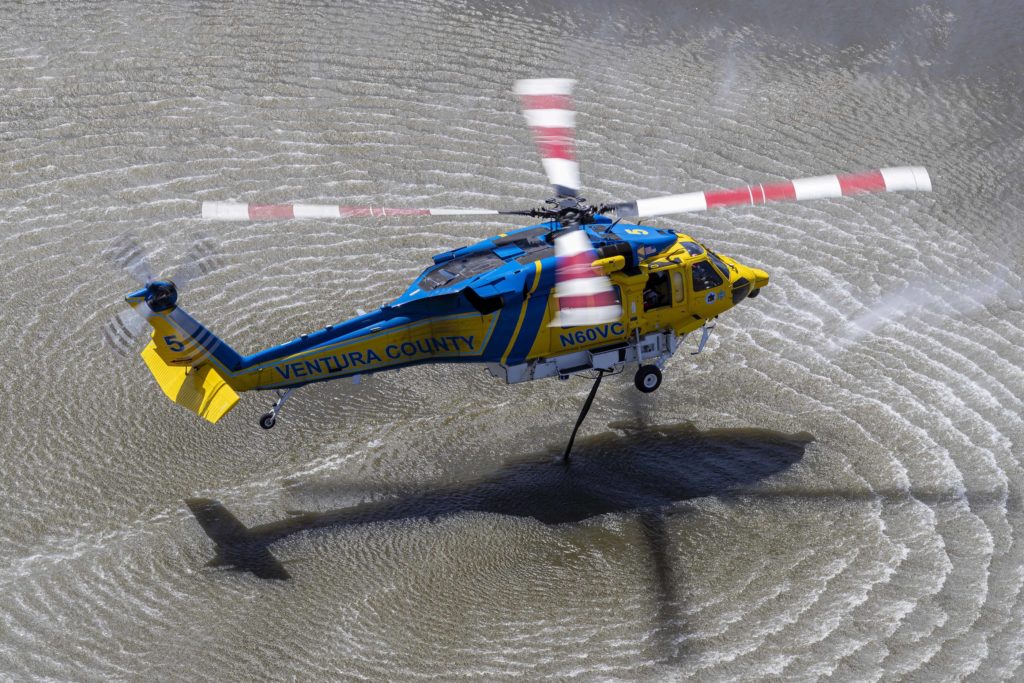
The two helicopters have glass cockpits and custom avionics, including dual Garmin 750 touchscreen navigation and communication systems and the Garmin Electronic Flight Instruments package. The Garmin systems are used in conjunction with Technisonic TDFM 9600 all-band radios. The Firehawks also have an AeroComputers UC-6000 moving map system, FLIR system, and a TrakkaBeam searchlight mounted under the nose. To support the unit’s extensive search and rescue missions, a BF Goodrich rescue hoist has been installed with the capability to provide rescue up to 300 feet below the aircraft. Both helicopters have thermal imaging and night vision capabilities.
As soon as the Firehawks arrived in Camarillo, they went to work. “It was an extremely easy transition, because the main difference between our Black Hawk and the Firehawk is basically the cockpit systems, the lift kit, and the tank,” said Keller.
Again, Bredenbeck was engaged to help work through a robust flight test regime and develop best maintenance practices. And Flight Safety remains part of the unit’s biannual training. “When we go, we are focused on recurring training for the pilots. But we take crew members who would typically be a left-seater, whether that be a firefighter paramedic, a senior deputy, a regular deputy, a fire captain, [or] a sergeant – anybody that’s going to be sitting in the front seat of our Firehawk. They go through emergency procedures; they go through the ground school – they are there to see everything we see.”
The intent, Keller explained, is to train anyone in the left seat “as close as possible to a co-pilot standard, but not actually being able to fly the aircraft.”
Unit crew training also includes a 10-hour course in a Robinson R44 at a local flight school, Orbic Helicopters, so all members can survive a crash should something happen to the pilot, “whether it’s a medical issue, a bird coming through the window or whatever it may be,” he added.

“Whoever’s in the left front seat, regardless [of the type of helicopter], is now going to be able to bring that machine back to the airport and hopefully have a normal landing, but at the very least get it to the ground [with] a landing that is survivable. It is an outstanding program for somebody that is not a rated pilot. Our goal is to eventually get everybody in the unit through the program so they can then act as a safety co-pilot for us.”
A Versatile Mix
The arrival of the Firehawks and training like that is all part of the aviation unit’s evolution. “We always wanted to have an aircraft that could get the mission done, whether it be firefighting, search and rescue, law enforcement, admin flights, EMS,” Keller explained.
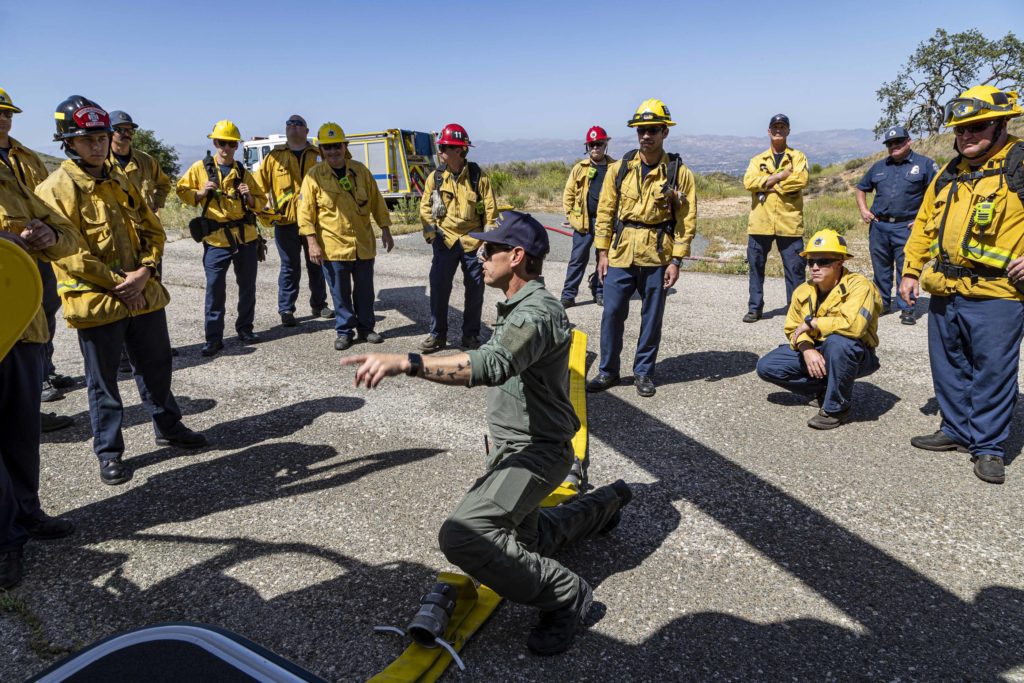
The unit conducts multiple mission types over varied terrain, including over the Santa Barbara Channel for water rescues and up in the Los Padres National Forest for hoist or medevac at 9,000 feet in the rain or snow. “We see all the different environments in this county … so having the right helicopter for the right job is very important.”
Given the requirements of the two distinct departments and mindful of taxpayer dollars, the Firehawk was the correct decision, said Keller. “When we first started researching a replacement for our firefighting Huey fleet, we looked at a lot of different aircraft … From a financial standpoint, our Black Hawks each cost under two million dollars through the BEST program, and even with the Firehawk conversion work, the county spent about $8.5 million on each aircraft. Those same helicopters bought brand new would cost over $20 million. From a utility standpoint, every drop you do in a Firehawk (with its 1000-gallon tank) is equivalent to three drops in a Huey (with 350-gallon tank). You are getting three times as much water in a very short period. With the addition of the retractable snorkel, you gain extra speed. The Hawks are also just plain faster than a Huey, so we can get on scene faster. Overall, it is a very efficient platform, and that is what we needed.”
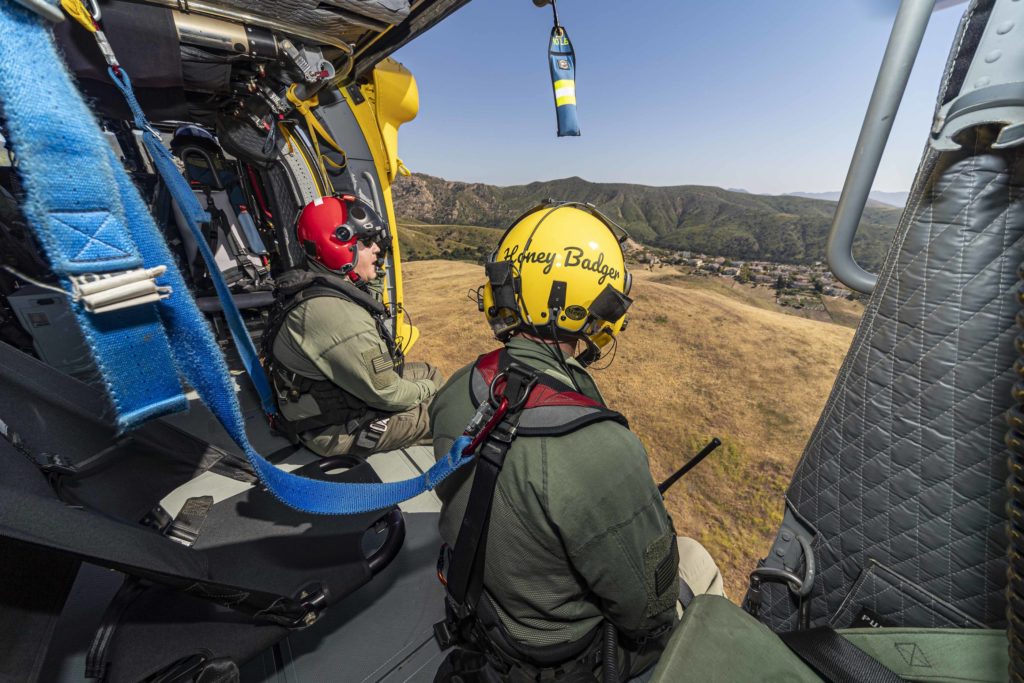
Notwithstanding its versatility, the unit does not want to employ the Firehawk in every situation, especially when other assets are available. “Maybe you shouldn’t use a Firehawk to go pick up one single person that got lost hiking … or an EMS type call,” Keller stated. “The Firehawk is an outstanding helicopter, but it also has some Subaru shortcomings compared to a skidded aircraft with the weight you have with the three wheels. If you go out on a rainy day [and need to land on] any sort of soft earth, the aircraft sinks a little bit into the ground. You can also have issues with snorkel clearances, and obviously it is just a bigger aircraft and has more downwash. There is certainly still plenty of value for the Bell medium platforms.”
The Firehawks were the first step in the county’s replacement program; the Subaru Bell 412EPX is the last for the time being. “Keeping the Bell medium platforms for SAR, EMS, and law enforcement, along with still operating the Long Ranger as a law enforcement platform, was particularly important and was never lost in translation,” said Keller. “We have been operating the Bell medium aircraft for years, so we know all the spots that we can fit into, and that will not be any different with the Subaru Bell 412EPX.”
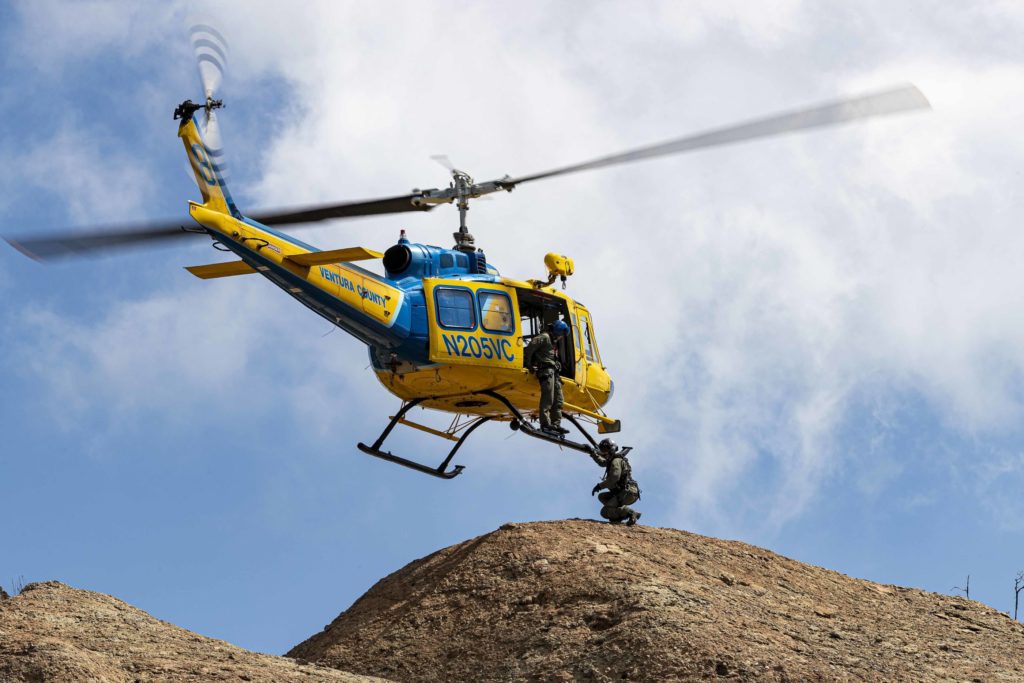
However, “now that we have the Firehawks in service, we do not have to run those [medium Bell and Huey platforms] on fires unless we really have to,” he said. “Ultimately, what it comes down to is during our normal day-to-day operations, there are so many different types of calls that can happen in our county and the surrounding areas [that] now, when a call comes in, with the incredible assets we have in the aviation unit, the pilots and the crews can choose the best aircraft available to respond to those calls.”
Joint Unit, One Mission
As the Aviation Unit’s captain, Downard has preached a united approach to the joint arrangement. “We have two departments we are supporting, but ultimately one mission. As the manager, I have taken that to heart. I often tell people that I do not see the blue law enforcement line, I do not see the red fire department line – I only see the Ventura County Aviation Unit. I believe everyone else that works here sees it that way as well. That is the culture.

“It took years to get here,” Downard acknowledged. “[But] both departments bring great ideas and great people to the unit, which ultimately means both departments are constantly striving not only to do the best job today, but constantly thinking about the future and moving forward.”
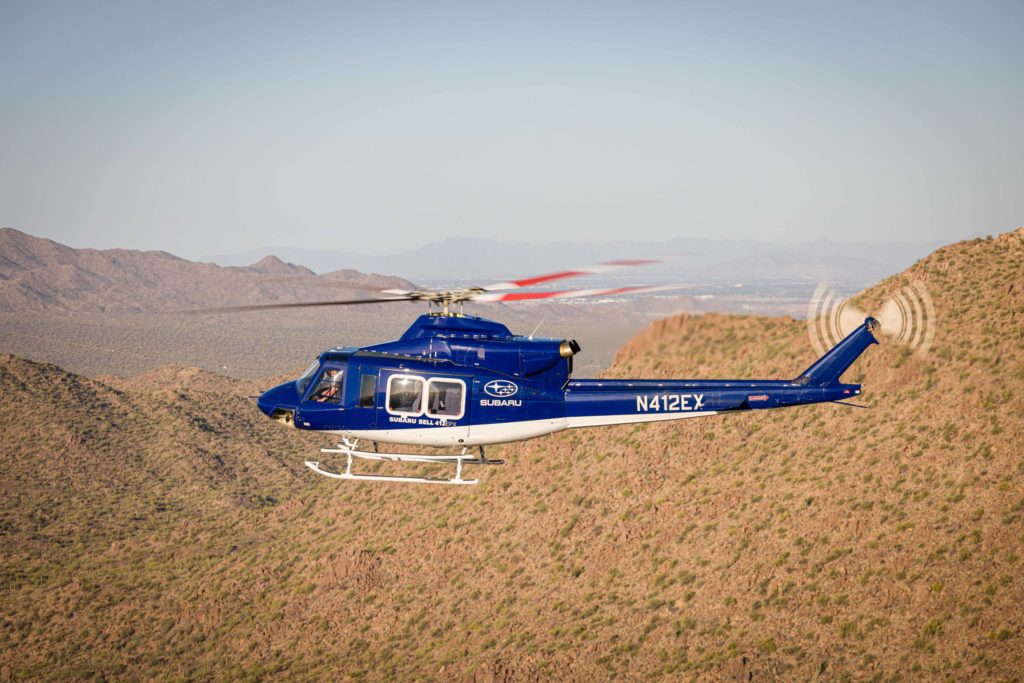
The acquisition of a new helicopter, the Subaru Bell 412EPX, was a first for the unit and a major project, but “an exciting one as we look towards our future,” he said. “Having the strongest assets in the heavy helicopter class and also in the medium class, that we can use interchangeably as needed, puts us in a great position to provide the best services to the citizens of Ventura County [and] all the other surrounding areas that may call on us for support.”







